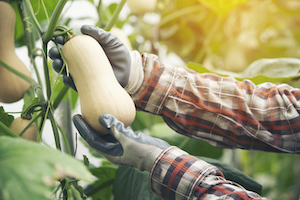With winter just around the corner, experts at the Iowa State University Extension and Outreach are offering their tips for harvesting and storing winter squash.
First off, it’s worth noting that winter squash can be enjoyed for months when it is properly harvested, cured, and stored. Ideally, this squash should be harvested when it’s fully mature. This can be determined by the hardness of the skin, as mature winter squash will have very tough skin that is difficult to puncture with a thumbnail.
Green acorn squash, in particular, should be harvested when the spot facing the ground changes from yellow to orange. And spaghetti squash should be picked when its color changes from ivory white to golden yellow.
Once the squash has been harvested, the produce should be handled carefully to avoid cuts and bruises. Pruning shears should also be used throughout the harvesting process.
Additionally, winter squash (except for the acorn types) should be cured at a temperature of 80 to 85 degrees Fahrenheit and a relative humidity of 80% to 85%. Through curing, growers can help harden the squash skins and heal any cuts or scratches.
Finally, storage should occur in a location that is consistently 50 to 55 degrees Fahrenheit. When properly stored and cured, acorn squash can potentially last up to eight weeks. Butternut squash can last up to three months, and hubbard squash can remain edible for up to six months.
